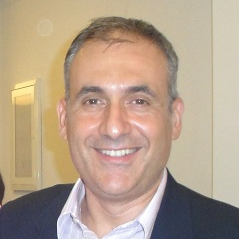Research on the Seismic Performance of RC Members of Existing, Modern and Strengthened RC Buildings
A special issue of Buildings (ISSN 2075-5309). This special issue belongs to the section "Building Materials, and Repair & Renovation".
Deadline for manuscript submissions: closed (30 March 2024) | Viewed by 2183
Special Issue Editors
Interests: repair, pre-earthquake and post-earthquake retrofit of RC structures; seismic behavior of structural members of substandard modern and strengthened RC structures; innovative strengthening materials and schemes, FRPs, high strength and ultra high strength steel fiber-reinforced concrete (HSSFRC and UHSSFRC)
Interests: inelastic behaviour of reinforced concrete structures, structural design, fiber-reinforced concrete and especially ultra-high strength fiber-reinforced concrete; seismic repair and rehabilitation of reinforced concrete structures especially with new materials (FRPs) and the seismic repair and rehabilitation of monuments
Interests: FRP; reinforced concrete; shear; tentioned concrete; steel fiber reinforced concrete; repair; tortion; structural health monitoring; strengthening and structural rehabilitation
Special Issues, Collections and Topics in MDPI journals
Special Issue Information
Dear Colleagues,
The behavior of reinforced concrete (RC) structural members (columns, beams, beam-column joints, walls) during strong seismic excitations decisively affects the overall seismic performance of RC buildings. The existing substandard RC buildings are particularly susceptible to severe damaging and catastrophic collapses due to numerous critical structural deficiencies, related to poor reinforcement details, low quality of the materials used and lack of capacity design approach. However, recent experimental and analytical research found in the literature indicates that unexpected brittle failure of the structural members of modern RC buildings is also possible to occur, with severe detrimental effects on the structural integrity. The latter is also true for existing RC buildings which are retrofitted according to modern design codes to withstand strong future earthquakes. Thus, further investigation, both experimental and analytical, is required to improve the provisions of modern codes for the design of earthquake-resistant RC buildings and to provide well-documented solutions for the effective strengthening of RC members.
This Special Issue aims to provide a significant impetus in the understanding of the failure mechanisms developed in RC members during strong earthquakes and to propose solutions to prevent premature, brittle failures of RC members and particularly of the most vulnerable ones (short).
The topics covered are:
- Experimental and analytical investigation of the seismic behavior of substandard, modern and retrofitted RC members;
- Research of the effectiveness of retrofit schemes which include the use of innovative materials and techniques.
Dr. George Kalogeropoulos
Prof. Dr. Alexandros-Dimitrios Tsonos
Prof. Dr. Constantin Chalioris
Guest Editors
Manuscript Submission Information
Manuscripts should be submitted online at www.mdpi.com by registering and logging in to this website. Once you are registered, click here to go to the submission form. Manuscripts can be submitted until the deadline. All submissions that pass pre-check are peer-reviewed. Accepted papers will be published continuously in the journal (as soon as accepted) and will be listed together on the special issue website. Research articles, review articles as well as short communications are invited. For planned papers, a title and short abstract (about 100 words) can be sent to the Editorial Office for announcement on this website.
Submitted manuscripts should not have been published previously, nor be under consideration for publication elsewhere (except conference proceedings papers). All manuscripts are thoroughly refereed through a single-blind peer-review process. A guide for authors and other relevant information for submission of manuscripts is available on the Instructions for Authors page. Buildings is an international peer-reviewed open access monthly journal published by MDPI.
Please visit the Instructions for Authors page before submitting a manuscript. The Article Processing Charge (APC) for publication in this open access journal is 2600 CHF (Swiss Francs). Submitted papers should be well formatted and use good English. Authors may use MDPI's English editing service prior to publication or during author revisions.
Keywords
- experimental tests
- analytical and numerical modeling
- retrofit
- innovative materials
- steel fiber concrete
- FRP
- shear span ratio
- reinforced concrete
- seismic response
- earthquake engineering
- cyclic behavior
- damage diagnosis, assessment and prevention
- novel construction materials







